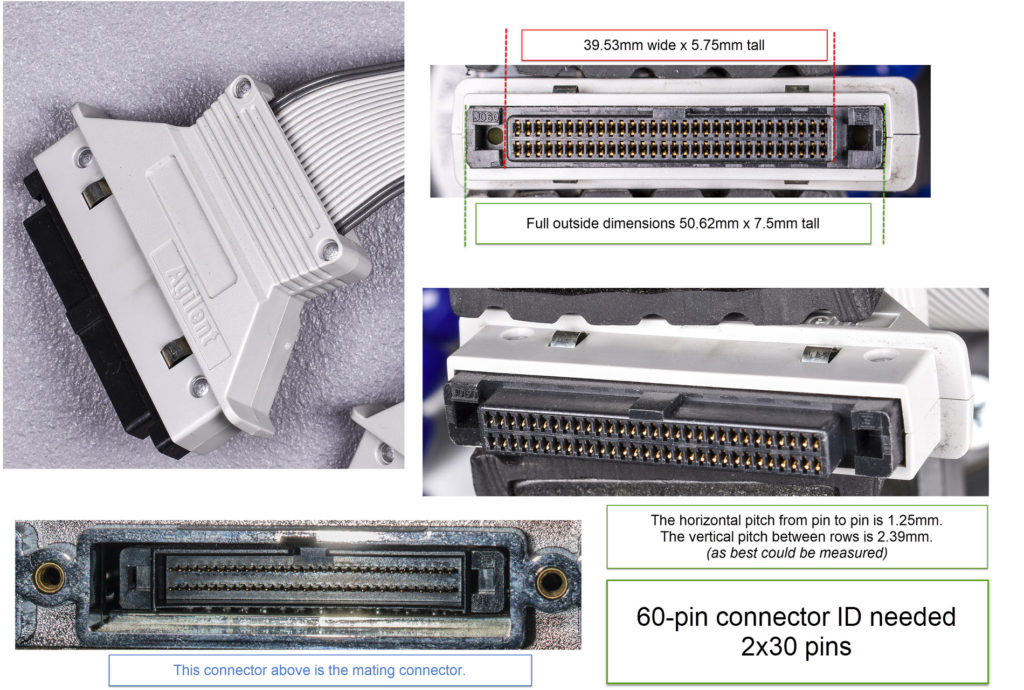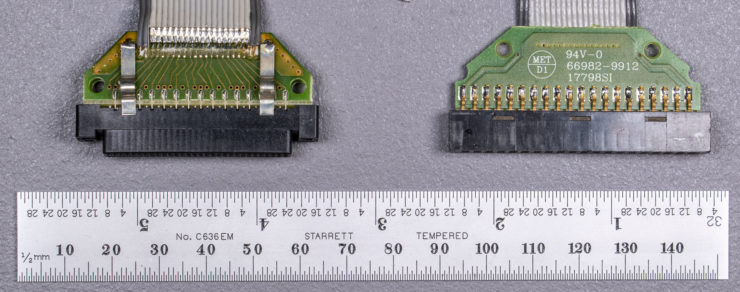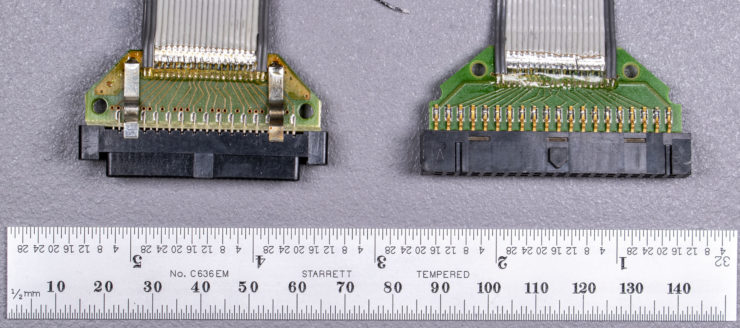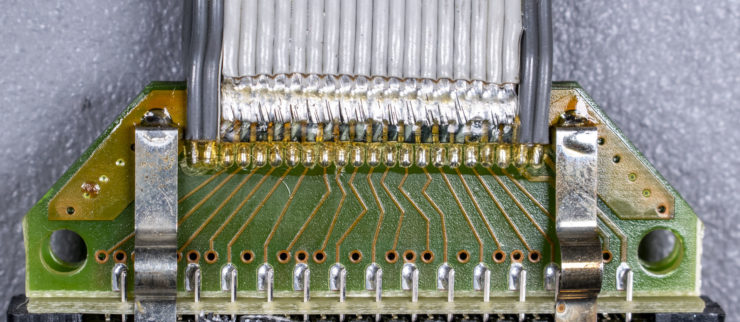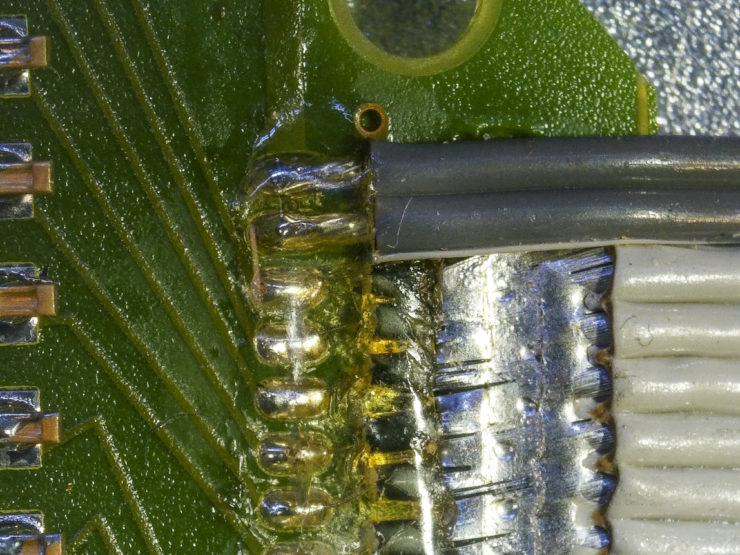Agilent Logic Analyzer cable teardown photos
So for today ladies and gentlemen, I present a teardown of an HP/Agilent logic analyzer cable. I think this is part number 16715-61601. This cable is used to connect one of a series of 40-pin compatible modules (many of the 167xx series, but not all) from the 60-pin connector on the LA side, to the 40-pin connectors that supports a variety pod adapters. The most popular, at least in my world, of the 40-pin pod adapters is the flying lead one, the venerable Agilent 01650-61608 pod adapters.
While I’m still trying to identify some of the connector part numbers used in this cable, the 60-pin adapter may be the Hirose HIF6 series.
I have some initial connector images and guesses, and I was slightly off in pitch measurements.
The pitch is actually 1.27mm, and 2.5mm between rows.
The aluminum rivets used to hold this connector together bothered the heck out of me, because I couldn’t simply remove a couple screws. This sent me on a mission to buy a small dremel-compatible drill press accessory from Home Depot which I used my older Sears Craftsman dremel tool with, to drill out the 1.71mm diameter rivets (with a 2.75mm head) using a 3/64″ drill bit. Worked fantastic, and please enjoy the fruits of my labor in the gallery below.
The connector hoods show part number 16715-45202 for the 60-pin side, and 16715-45201 for the 40-pin side.
The cable assembly is made up of the 60-pin connector side which then branches into two 24.5mm wide cables, one going to Pod 1 (40-pin), and one going to Pod 2(40-pin). Each of these cables, at first glance appears to be a normal flat ribbon cable, but actually has a unique construction. The center 18 wires are lossy ribbon mini-coax cables with an outside stranded shield, which is soldered together, and a center conductor that carries the signal. The end wires appear to me as solid conductors used for power and ground.
You can see that the center signal conductor has a black with gray-stripe jacket which keeps it isolated from the stranded shielding of the mini coax. For reference purposes, those mini-coaxes measure about 20.5mm across for all 18 of them. This puts them at ~1.14mm OD for each.
From my post here you can also see another example of similar construction from Agilent on one of their pods. That internal jacket was clear, which was pretty darn cool, but different from what we see here.
I welcome corrections, additional details, etc.
